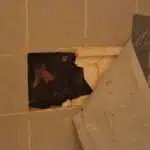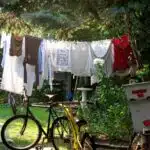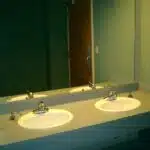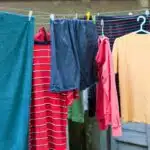As a professional organizer, I understand the importance of having an organized and functional living space. When it comes to organizing baby clothes, there are several key factors to consider in order to create a system that is both practical and efficient. With so many different sizes, styles, and types of clothing, it can be overwhelming to know where to start. However, with the right approach and mindset, organizing your baby’s wardrobe can be a rewarding and satisfying experience.
In this article, we will explore some tips and tricks for how to organize baby clothes in a way that works for you and your family’s needs. From sorting by size and seasonality, to utilizing storage solutions that maximize space, we’ll cover all the basics for creating an organized closet or dresser for your little one. Whether you’re a first-time parent or have multiple children, these strategies will help make managing your baby’s clothes much easier and stress-free.
Assessing Your Baby’s Clothing Needs
As a professional organizer, I understand that organizing baby clothes can be a daunting task for new parents. However, it is an essential step in ensuring that your baby’s clothing needs are met efficiently and effectively. Before diving into the organization process, it is crucial to assess your baby’s clothing needs by identifying what fits and what is essential.
Assessing clothing fit is crucial because babies grow quickly. It is advisable to have a good idea of your baby’s size before purchasing any clothes. A good rule of thumb is to buy clothes that are one size bigger than their current size. You should also consider the weather when buying clothes; for instance, if it’s winter, you’ll need warm clothing items like jackets and sweaters.
Identifying clothing essentials involves determining what your baby needs most often and ensuring that you have enough of those items. For example, onesies, pajamas, socks, and hats are essential items that babies use daily. Additionally, consider the occasions when your baby will need specific outfits such as formal events or outdoor activities. By identifying these essentials early on, you’ll save yourself time and money in the long run.
Once you’ve assessed your baby’s clothing needs by identifying what fits and what is essential, the next step is sorting clothing by size and age. This step ensures that you can easily access the clothes suitable for your baby at any given time without having to sift through piles of clothes that no longer fit them or are not season-appropriate.
Sorting Clothing By Size And Age
One of the most important aspects of organizing baby clothes is sorting them by size and age. Babies grow quickly, and it can be challenging to keep up with their changing clothing needs. Organizing clothes by size and age makes it easy to find the right outfit for your little one without having to sift through piles of clothing that no longer fit.
To sort your baby’s clothing by size and age, start by separating out any newborn-sized items from larger sizes. Next, divide the remaining clothing into categories based on age ranges such as 0-3 months, 3-6 months, 6-9 months, etc. Once you have sorted the clothing into these categories, you can further organize them by type (e.g., onesies, pants, sleepers) or color.
Sorting by color can be a helpful way to quickly identify specific types of clothing or outfits. For example, if you know that all of your baby’s blue sleepers are in one area of the closet or dresser drawer, it will be much easier to find what you need when you’re dressing your little one at night. Additionally, once your baby has outgrown certain items of clothing, consider donating them to charities that accept gently used children’s clothing. This not only helps keep your home organized but also benefits others in need.
As babies grow and seasons change, it is essential to rotate their wardrobe accordingly. In the subsequent section about seasonal clothing rotation, we will discuss how to store out-of-season items properly and make sure that your baby always has appropriate clothing for the current weather conditions.
Seasonal Clothing Rotation
Sorting baby clothes by size and age is an essential first step in organizing your little one’s wardrobe. However, as your baby grows, so will their collection of clothing. In fact, according to a recent survey conducted by BabyCenter, parents spend an average of $60 per month on baby clothes during the first year alone. With this kind of investment, it’s crucial to have a system in place that allows you to easily manage and rotate your baby’s wardrobe.
One way to keep your baby’s clothing collection manageable is through off-season storage and swapping. As the seasons change, it’s important to pack away clothes that are too warm or too cold for the current weather. This not only frees up space but also ensures that your baby always has comfortable and appropriate clothing available. When packing away seasonal items, be sure to label boxes clearly and store them in a cool, dry place.
To help keep track of what you have on hand, consider creating a baby clothing inventory. This can be as simple as keeping a list of what items you own or using a spreadsheet to track which items are currently in use and which ones are packed away. A well-organized inventory makes it easy to swap out items when needed and ensures that you don’t accidentally purchase duplicate items or sizes. By taking the time to organize your baby’s wardrobe now, you’ll save time (and money!) in the long run while providing your little one with everything they need to stay comfortable and stylish throughout their early years.
Creating A Baby Clothing Inventory
When it comes to organizing baby clothes, creating a digital inventory can be incredibly helpful. This involves taking photographs of each item and organizing them in a digital album or spreadsheet. Not only does this help you keep track of what you have, but it also makes it easier to share with family and friends who may want to gift clothing items. Additionally, having a digital inventory can help you keep track of the sizes your baby has outgrown and which items are still needed.
Another great way to organize baby clothes is through clothing swaps. These events allow parents to trade gently used clothing items that their children have grown out of for new-to-them items in the right size range. Clothing swaps are not only environmentally friendly but also budget-friendly as they allow parents to get new clothes for their children without having to spend money on brand new items.
Incorporating both a digital inventory and clothing swaps into your organization strategy can be incredibly effective when it comes to managing baby clothes. By keeping track of what you have digitally and trading out items your child has outgrown at clothing swaps, you will be able to stay organized while also being mindful of your budget and the environment. In the next section, we will discuss how choosing the right storage solutions can help take your organization strategy even further.
Choosing The Right Storage Solutions
- When organizing baby clothes, there are many types of storage solutions available. These can range from using traditional plastic bins and drawers to investing in custom-built closet systems.
- Maximizing storage space is key when organizing a baby’s closet. Utilizing vertical space, such as wall-mounted shelves or baskets, is an effective way to keep items off the floor and organized.
- Dividing storage solutions into categories can also help keep items organized. This can be done by setting up storage solutions for items such as onesies, pajamas, and outerwear.
- Utilizing labels and bins with different colors or designs can help make it easier to find items when organizing baby clothes.
Types Of Storage Options
When it comes to organizing baby clothes, choosing the right storage solutions is crucial. It not only helps you keep your baby’s wardrobe organized, but also makes it easier for you to find what you need quickly and efficiently. Maximizing space is key, especially if you have limited closet or drawer space. Fortunately, there are several types of storage options available that can help you keep track of your baby’s clothes.
One option for storing baby clothes is to use hanging organizers. These organizers typically come with multiple compartments where you can store different types of clothing items such as onesies, socks, and bibs. You can hang them on the back of a door or inside your closet to save space. Another option is to use baskets and bins for storing clothes. This DIY storage solution allows you to easily separate clothing items by size, type, or season. You can label each basket or bin accordingly for easy access.
Lastly, shelving units are a great way to store larger items such as blankets and towels. They also provide additional space for storing folded clothing items such as pants and shirts. You can choose from various types of shelving units ranging from simple wall-mounted shelves to floor-standing bookcases depending on your preference and available space.
In conclusion, choosing the right storage solutions is essential in keeping your baby’s clothes organized and easily accessible when needed. By maximizing your space and utilizing DIY storage solutions such as hanging organizers, baskets and bins, and shelving units, you can create a functional wardrobe system that works best for you and your little one.
Maximizing Storage Space
When it comes to organizing baby clothes, one of the most important things to consider is maximizing storage space. This can be especially challenging if you have limited closet or drawer space, but there are several space-saving hacks and creative storage solutions that can help you make the most of what you do have. As a professional organizer, my goal is to help you create a functional wardrobe system that works best for you and your little one.
One simple way to maximize storage space is by using hanging organizers. These come in various sizes and styles and can be hung on the back of a door or inside your closet. They typically feature multiple compartments where you can store different types of clothing items such as onesies, socks, and bibs. By utilizing these organizers, you can free up valuable drawer and shelf space while keeping your baby’s clothes easily accessible.
Another great option for maximizing storage space is by using baskets and bins. This DIY storage solution allows you to easily separate clothing items by size, type, or season. You can label each basket or bin accordingly for easy access. Baskets and bins are also great for storing larger items such as blankets and toys. When choosing baskets and bins, opt for ones that are stackable so that they take up less floor space.
In summary, maximizing storage space is crucial when organizing baby clothes. By using hanging organizers, baskets and bins, and other creative storage solutions such as shelving units, you can create a functional wardrobe system that works best for your needs. Remember to choose options that are both practical and visually appealing to ensure that your baby’s clothes stay organized and easily accessible at all times.
Utilizing Drawer Organizers
A key aspect of keeping baby clothes organized is maximizing space, especially if you have a limited amount of storage available. One way to do this is by utilizing drawer organizers. These handy tools can help keep items separated and easy to find, while also preventing items from becoming tangled or disorganized.
Customizing your drawer organizers can also be helpful in keeping things tidy. Consider dividing drawers into sections based on size or type of clothing (such as onesies, pants, or socks) to make it easier to find what you need quickly. You can also use smaller organizers within larger ones to further separate items and create designated spaces for specific items.
Using drawer organizers not only helps keep baby clothes organized, but it can also save time and reduce stress when getting ready in the morning or during diaper changes. Plus, with customizable options, you can create a system that works best for your individual needs and preferences. In the next section, we will explore another useful tool for organizing baby clothes: hanging clothes with space-saving hangers.
Hanging Clothes With Space-Saving Hangers
1.Space-saving hangers are a great way to maximize storage space in your closet, especially when organizing baby clothes.
2.Common types of space-saving hangers include velvet hangers, slim-line hangers, and cascading hangers.
3.Using space-saving hangers can offer a variety of benefits, such as providing more storage space, preventing clothes from becoming wrinkled, and helping items become more visible.
4.Installing space-saving hangers is relatively easy and straightforward.
5.When installing space-saving hangers, it is important to make sure that the hangers are installed securely and that the items are hung correctly.
6.By using space-saving hangers, you can reduce clutter and create an organized space for baby clothes.
Types Of Space-Saving Hangers
Are you struggling with organizing your baby’s clothes in the closet? One of the best solutions to this problem is using space-saving hangers. Two types of space-saving hangers that are highly recommended by professional organizers are velvet hangers and cascading hangers.
Velvet hangers are perfect for baby clothes because they prevent them from slipping off the hanger. These hangers have a soft, velvety surface that prevents delicate fabrics from snagging or becoming damaged. Additionally, velvet hangers take up less space than traditional plastic or wooden hangers, allowing you to fit more clothes in your baby’s closet.
Cascading hangers are another type of space-saving hanger that can help you maximize the available space in your baby’s closet. These hangers allow you to hang multiple garments on one hook, which means you can store more items in a smaller area. Cascade hooks come in different sizes, making them ideal for hanging both infant and toddler clothes. By incorporating these two types of space-saving hangers into your baby’s closet organization plan, you’ll be able to keep all their clothes tidy and easy to find without taking up too much space.
Benefits Of Using Space-Saving Hangers
When it comes to organizing your baby’s clothes, using space-saving hangers can be a game-changer. Not only do they help you maximize closet space, but they can also save you money in the long run. By making the most out of the space available in your baby’s closet, you’re less likely to need additional storage solutions down the road.
One of the main benefits of using space-saving hangers is that they allow you to fit more clothes into a smaller area. This is especially important when it comes to a baby’s wardrobe since they tend to have a lot of items in different sizes. Using velvet or cascading hangers means that you won’t have to sacrifice hanging space for other necessary storage solutions like bins or baskets. With more hanging room available, you’ll be able to see all of the clothes at once, making it easier to find what you need and preventing any items from getting lost in the shuffle.
Another benefit of using space-saving hangers is that they can save you money over time by keeping clothes in good condition. Traditional wire or plastic hangers can stretch out fabrics over time, causing them to lose their shape and wear out faster. Velvet hangers prevent delicate fabrics from snagging or becoming damaged, while cascading hangers keep garments organized and wrinkle-free without having to fold them tightly. By keeping clothes looking their best for longer, you’ll be able to avoid having to replace items as frequently and ultimately save money on your baby’s wardrobe in the long run.
Installing Space-Saving Hangers
Maximizing closet space is a crucial aspect of organizing a baby’s clothes, and one effective way to do this is by installing space-saving hangers. There are different types of space-saving hangers available in the market that can help parents make the most out of their storage area. This subtopic will discuss how using space-saving hangers can help optimize closet space while keeping baby clothes organized and wrinkle-free.
One type of space-saving hanger that works well for baby clothes is the cascading hanger. These hangers allow you to hang multiple items vertically, which creates more hanging space in your closet. They also prevent clothes from getting wrinkled since the garments are not tightly folded. Cascading hangers come in various sizes, making them ideal for different types of baby clothing, such as onesies or dresses.
Another type of space-saving hanger that parents can consider is velvet hangers. Velvet hangers have a non-slip surface that keeps clothes from slipping off and ending up on the floor. They also help preserve delicate fabrics by preventing snagging or tearing. Using velvet hangers for baby clothes ensures that they remain in excellent condition for longer periods and saves money in the long run by reducing the need to replace damaged clothing frequently. Overall, incorporating these types of space-saving hangers into your organization strategy can create an efficient and functional closet system for your baby’s clothing needs.
Storing Clothes In Bins Or Baskets
Hanging clothes with space-saving hangers may be an efficient way to organize baby clothes, but it is not always the best option. For instance, some parents might prefer storing clothes in bins or baskets as it is easier to access and sort through items. Moreover, hanging clothes can take up a lot of space especially if you have limited closet room.
When storing baby clothes in bins or baskets, there are several things you need to consider. Firstly, color coding can help you locate specific items easily and quickly. For instance, you might decide to store all your baby’s onesies in one bin labeled “Onesies” and use a different color for each size. This will make it easy for you to find the right size as your baby grows.
Secondly, folding techniques are crucial when storing baby clothes in bins or baskets. You should fold each item neatly to maximize space and prevent wrinkles. Consider using Marie Kondo’s KonMari method where you fold clothing into neat rectangles which stand upright on their own.
Lastly, labeling clothing storage containers is essential when organizing baby clothes in bins or baskets. Labeling each bin/basket will help keep your items organized and prevent confusion when trying to locate something specific. You can use labels that indicate the type of clothing item stored inside such as “Pants”, “Tops”, “Socks”, etc.
Transitioning into the subsequent section about labeling clothing storage containers: By following these simple steps when storing baby clothes in bins or baskets – color coding, folding techniques, and labeling – you can simplify your life as a parent while ensuring that all your little one’s clothing is properly organized and easy to access whenever needed.
Labeling Clothing Storage Containers
One of the best ways to organize baby clothes is by labeling clothing storage containers. Labeling techniques are essential in keeping things organized and easily accessible. You can use handwritten labels or print out pre-made labels that you can stick onto your DIY storage solutions. Labeling the storage containers will not only help you save time but also keep you from rummaging through piles of clothing when looking for a specific item.
You can create your own DIY storage solutions using different items such as baskets, boxes, or bins. The key is to ensure that the containers are sturdy enough to hold the weight of the clothing and easily stackable. Once you have chosen your preferred storage container, it’s time to label them accordingly. For example, you can label one box ‘Newborn Clothes’ and another ‘3-6 Months Clothes.’ This way, you know exactly where to find what you need when dressing up your baby.
Labeling clothing storage containers is an easy and effective way of organizing your baby clothes. It helps you keep track of what items you have and avoid buying duplicates unnecessarily. It also makes it easier for anyone else who may be assisting with taking care of your baby to find what they need quickly without having to ask for assistance. In the next section, we will discuss how purging unnecessary or unused clothing can help free up space in your closet and make room for other essentials.
Purging Unnecessary Or Unused Clothing
- Sorting clothing is the most important step in purging unnecessary or unused items. It is helpful to sort clothing by type and size, making it easier to identify which items are no longer needed.
- Identifying items that can be donated to a charity or second-hand store is a great way to give back to the community. Furthermore, it can help make room for new items of clothing.
- Donating items that have been outgrown or are no longer needed is a great way to help those in need. It is important to ensure the donated clothing is in good condition and free of any stains or damage.
- When purging baby clothes, it is important to make sure any items that are being kept are in good condition. This way, they can be worn or passed down to younger siblings or relatives.
- An organized closet can make it easier to find clothing items quickly and efficiently. It is important to store baby clothes in a way that allows them to be seen easily.
- Taking the time to donate or sell unused or outgrown baby clothes is a great way to make sure they are put to good use. This can help make room for new items and also benefit those in need.
Sorting
When it comes to purging unnecessary or unused baby clothes, sorting is an essential step. Sorting can be done in different ways, but color coding and style grouping are the two most common methods used by professional organizers. Color coding involves arranging clothes according to their colors, while style grouping involves categorizing them based on their type.
Color coding is a popular method because it creates a visually appealing display of clothes and helps parents find matching outfits easily. It also makes it easier to identify which colors are missing from the wardrobe. On the other hand, style grouping is ideal for parents who prefer to organize clothes by their function or purpose. This method groups clothes together according to their use, such as sleepwear or outdoor clothing.
Once sorting is complete, donating unwanted items is the next step. Donating not only frees up space but also gives back to the community. Finding local organizations that accept gently used baby clothing can be challenging, but with some research, parents can locate several options in their area. Donating allows others in need to benefit from the clothing that would have otherwise gone unused.
In summary, sorting through baby clothes is crucial before deciding what items to donate. Professional organizers recommend using either color coding or style grouping as effective methods for organizing clothes by color or function respectively. Once sorted out, finding local organizations that accept donations of gently used baby clothing allows parents to give back while decluttering their home.
Identifying
As a professional organizer, it is important to help parents identify their baby clothing essentials. This entails determining the items that are necessary for a baby’s basic needs, such as onesies, sleepwear, and bodysuits. By identifying these essentials, parents can make informed decisions when purging unnecessary or unused clothing.
Furthermore, identifying baby clothing trends can also be helpful in deciding which items to keep or donate. Trends change quickly in the fashion industry, even for babies. Parents may find that certain styles or patterns are no longer popular or practical for their child’s age or size. Keeping up with current trends can aid in decluttering and creating a functional wardrobe.
When identifying essentials and trends, it is important to consider factors such as the baby’s age, seasonality, and lifestyle. For example, newborns require more frequent changes of clothes due to spit-up and diaper leaks. Additionally, colder climates may necessitate warmer clothing options while outdoor activities call for durable and comfortable clothes.
By properly identifying essential items and current trends in baby clothing, parents can make informed decisions when purging unnecessary or unused clothing. This allows them to create a functional wardrobe that meets their child’s needs while also giving back through donations.
Donating
Purging unnecessary or unused baby clothing is a necessary task for parents, as it helps them declutter their homes and create a functional wardrobe for their child. However, simply throwing away clothes that no longer fit or are no longer needed is not the only option. Donating these items to those in need can provide numerous benefits.
The benefits of donating baby clothing include reducing waste in landfills, helping families in need, and potentially receiving tax deductions for charitable donations. There are many donation centers available for parents to choose from, including local thrift stores, charities, and non-profit organizations. It is important to research these centers and ensure that they accept baby clothing donations before dropping off any items.
Finding donation centers may seem like an additional task on top of purging unwanted items, but it can ultimately lead to a greater sense of purpose and satisfaction for parents. Knowing that their donated items can help another family in need can be rewarding. Plus, donating rather than throwing away clothes aligns with a desire to serve others and reduce environmental impact.
Donating Or Selling Gently Used Clothing
When it comes to organizing your baby’s clothing, you might find that there are items that have been outgrown or no longer fit. Donating or selling gently used clothing is a great way to declutter and give back to those in need. But how do you choose whether to donate or sell? Here are some tips.
- Consider the condition of the clothing: If the clothes are still in great condition with no stains or tears, consider selling them to make a little extra money. However, if they have signs of wear and tear, donating them might be a better option.
- Check with local charities: There are many organizations that accept donations of baby clothes such as Goodwill, Salvation Army, and local women’s shelters. Research different charities in your area and see which ones align with your values.
- Time and effort: Selling clothing takes time and effort, from listing items online to meeting with buyers. If you don’t have the time or inclination to sell the clothing, donating is an easier option that can still make a difference.
Choosing between donating or selling gently used baby clothes ultimately comes down to personal preference and circumstances. Whether you choose to donate or sell, giving away items that no longer serve a purpose in your home can bring a sense of peace and fulfillment.
With some of your baby’s clothes donated or sold, it’s important to clean and maintain what’s left behind so they last as long as possible.
Cleaning And Maintaining Baby Clothing
Spot-cleaning baby clothes is an important part of maintaining them, as it can help remove small stains and odors. Stain removal should be done as soon as possible to prevent permanent damage to the fabric. Freshening baby clothing can be accomplished by ironing, machine washing, and drying. Sorting, storing, hanging, folding, mending, accessorizing, upcycling, reselling, and reusing baby clothes are all ways to keep them organized and looking their best.
Spot-Cleaning
Keeping your baby’s clothes clean can be a challenge, especially when faced with the inevitable stains and spills that come with having a little one. One way to stay on top of things is by spot-cleaning as soon as possible after a spill or accident occurs. This will prevent stains from setting and make it easier to get rid of them later on.
Using natural cleaners is a great option for spot-cleaning baby clothes. Not only are they safe for your child, but they are also better for the environment than harsh chemical cleaners. Some effective natural cleaners include white vinegar, baking soda, and lemon juice. Simply mix these ingredients with water and apply the solution to the stained area before washing as usual.
Preventing stains in the first place is another key strategy for keeping your baby’s clothes looking their best. This can be done by using bibs during feeding times, avoiding messy foods or drinks when possible, and staying on top of laundry so that clothes aren’t left sitting with stains for too long. By being proactive about stain prevention and using natural cleaners for spot-cleaning when needed, you can ensure that your baby’s clothes always look neat and clean.
Stain Removal
When it comes to cleaning and maintaining baby clothing, stain removal is a crucial aspect to consider. Babies are prone to making messes, so it’s important to know how to effectively remove tough stains from their clothes. Natural stain removers are an excellent option for parents who want to avoid using harsh chemicals on their child’s garments.
One effective natural stain remover is hydrogen peroxide. It’s safe for both your baby and the environment and can be used on a variety of fabrics. To use hydrogen peroxide as a stain remover, simply apply it directly to the affected area, let it sit for a few minutes, then wash as usual. Another natural stain remover is salt, which works well on grease stains. Mix salt with water to create a paste and apply it directly to the stained area before washing.
Pre-treating stains as soon as possible is key for successful stain removal. If you’re out of natural cleaners or don’t have time to treat the stain right away, simply rinse the affected area with cold water until you can treat it properly later on. By being proactive about removing tough stains and using natural cleaners when possible, you can keep your baby’s clothes looking clean and fresh no matter what messes come their way.
Incorporating A Laundry Routine
A laundry routine is essential to keep baby clothes organized and clean. It is important to establish a consistent laundry frequency that fits your family’s schedule. This will ensure that you always have clean clothes available for your little ones. A good rule of thumb is to do laundry once or twice a week, depending on how much laundry accumulates.
When it comes to stain removal techniques, there are many options available. For tough stains like baby food or formula, pre-treating the stain with a stain remover before washing can be effective. For lighter stains like spit-up or drool, simply washing the item in cold water with detergent can do the trick. It’s also important to avoid using bleach or fabric softeners on baby clothes as they can be harsh on delicate skin.
A laundry routine is not only beneficial for keeping baby clothes organized but also helps teach responsibility and organization skills to kids as they grow older. By involving children in the laundry process, they can learn how to sort and fold clothes while practicing their motor skills. Additionally, by teaching them how to remove stains and take care of their clothes, they will develop a sense of ownership over their belongings and become more self-sufficient in the long run.
Teaching Kids To Help With Clothing Organization
Now that you have established a laundry routine, it’s time to turn your attention to organizing your baby’s clothes. Keeping your baby’s clothes organized can save you time and energy on hectic mornings when you’re trying to get everyone ready for the day. A well-organized closet or dresser can also help you keep track of what items your baby has outgrown or needs replacing.
To start with, consider investing in storage containers that are kid-friendly and easy to use. Choose containers that are the right size for your baby’s clothes, so they don’t get lost in a sea of fabric. Label each container with the contents inside, so you know exactly where everything is. Use different colors or patterns for different types of clothing, such as onesies or pajamas.
Next, involve your child in the process of organizing their clothing. Giving them kid-friendly tasks like matching socks or folding washcloths can help them feel included and responsible for their belongings. Use positive reinforcement when they complete a task correctly, such as offering praise or a small reward. Teaching children how to organize their belongings at an early age can set them up for success later in life.
Adapting your system as your baby grows is essential to maintaining an organized space. As they outgrow clothes and move on to new sizes, adjust the storage containers accordingly. Consider donating gently used items that no longer fit instead of letting them take up valuable space in your child’s closet or dresser. By staying organized and adapting as needed, you can create a clutter-free environment that will benefit both you and your child in the long run.
Adapting Your System As Your Baby Grows
Congratulations on the arrival of your baby! As a professional organizer, I understand how overwhelmed you may feel with all the baby clothes and accessories. But fear not, with a well-organized system in place, you can easily adapt it to meet your baby’s changing needs.
Adjusting storage is key to keeping your system organized as your baby grows. You will need to reorganize the closet or dresser every few months to accommodate new sizes and styles of clothing. It’s essential to keep only what fits and is seasonally appropriate. Consider using labeled bins or baskets for outgrown clothes that are still in good condition but no longer fit. This will make it easier for you to identify what needs to be donated or passed down to younger siblings.
As your baby outgrows their clothes, consider donating excess items that are still in good condition. Donating helps clear clutter from your home while giving back to those in need. You can donate gently used clothes and accessories to local charities, consignment shops, or online marketplaces. Remember, keeping an organized system in place will help simplify this process and make it easier for you to maintain a clutter-free home for both you and your growing family.
Conclusion
Organizing baby clothes may seem like a daunting task, but with the right approach and tools, it can be a breeze. The first step is to assess your baby’s clothing needs by considering their age, size, and seasonal variations. Sorting clothes by size and age will help you keep track of what your baby has outgrown and what they still need.
A seasonal clothing rotation is also helpful in keeping your baby’s wardrobe organized. Creating an inventory can further assist in tracking which items your baby uses most often. Choosing the right storage solutions is key to maximizing space and accessibility while ensuring that the clothes remain clean and well-maintained.
Cleaning and maintaining the baby’s clothing should be incorporated into your routine along with setting up a laundry schedule. It is important to teach kids from an early age to help with clothing organization as it will instill good habits for later years. Finally, adapting your system as your baby grows will ensure that you are always on top of their evolving needs.
Organizing baby clothes can be compared to assembling a puzzle; each piece must fit together perfectly to create a complete picture. By using the tips outlined in this article, you can create an efficient system that not only keeps your baby’s clothes neat and organized but also frees up space for other essential items. Ultimately, organization is key to making parenting less stressful so that you can enjoy precious moments with your little ones without feeling overwhelmed by cluttered closets or missing clothing items.
Image Credits
- “Baby Clothes” by Joe Shlabotnik (featured)

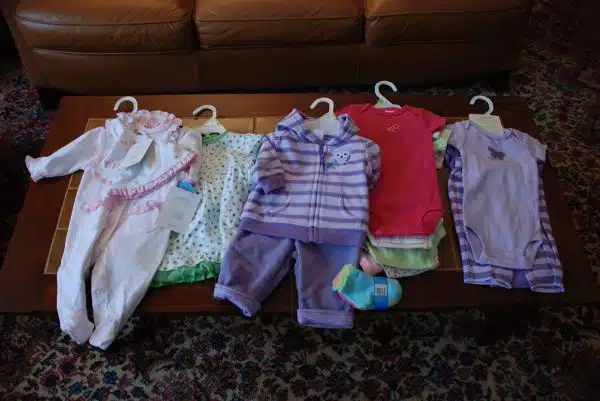



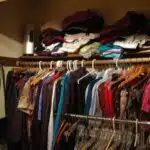

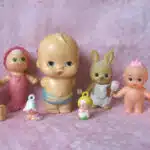

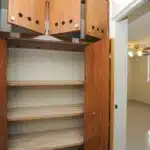



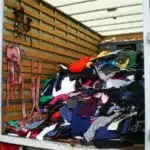



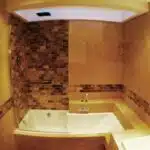
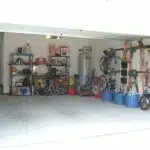



![How To Wash And Care For White Clothes 22 The only genuine borax soap cleanses hygienically saves the clothes and hands. 20 Mule-Team brand Boraxo white laundry soap [front]](https://green-life.blog/wp-content/uploads/2023/05/YDXLLCovnOjq-150x150.jpg.webp)
